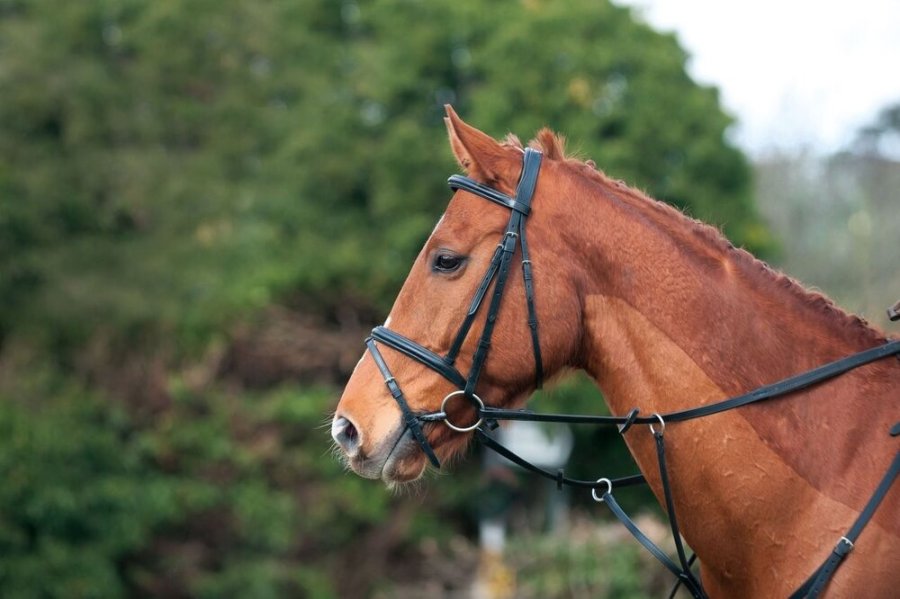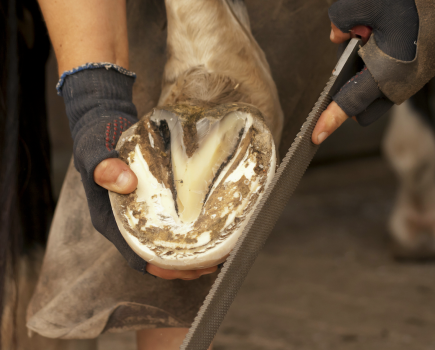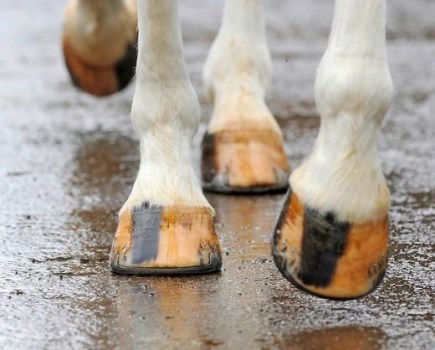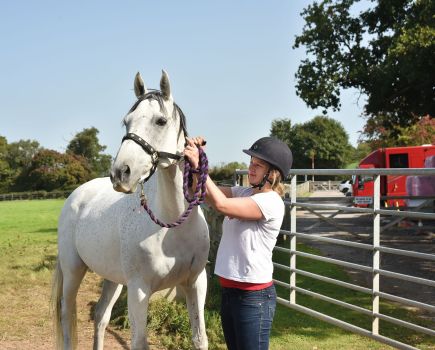A horse’s coat grows rapidly when the seasons change and you’ll soon be reaching for the horse clippers to keep your steed trimmed, looking smart and feeling comfortable as you take care of them in winter. Before you press the ‘on’ button, check out the following top tips from Paula Bryan of Clipit Gromming, who explains how to clip a horse correctly.
Common problem areas when clipping a horse include choosing the right type of clip, knowing how much hair to remove, tensioning clippers correctly, getting straight and even lines, and best practice for coat care both before and after clipping. If you are clipping a nervous horse who is scared of clippers, or being clipped for the first time, you will find this advice useful too.
How do I get the right tension on the clippers?
The most common problem that people have with clipping is getting the right tension on their clippers. Incorrectly tensioned clippers leave lines in the coat and will cause the blades to overheat and become blunt much sooner. Different clipper brands will vary slightly, so it’s important to check the manufacturer’s instructions and tension accordingly.
Once you know your clipper’s tensioning amount, place the blades on the clipper, put the tensioning screw with spring through, and oil them. With most clippers, you tighten the screw all the way until it won’t tighten any more, and then loosen by one or two turns depending on the brand. There is usually a little mark on top of the tensioning screw to help you count the rotations.
Next, turn on the clippers and listen. If it sounds like a sewing machine, I would start clipping, but if it sounds tight and squeaky, you need to loosen them. The rule of thumb is that less tension is better than too much.
How much hair should I remove?
Ask yourself what your horse is doing work-wise and whether they are living in or out. I always follow the rule that you should only take off what you need off. I wouldn’t recommend a full clip for a horse who is going to be living out all year round, for example.
With a youngster, or horse in light work, I’d suggest a trace or bib clip. Only horses in full work need to have full clips. The welfare of your horse should come first.
What should I wear when clipping?
The norm over the years has been to wear a boiler suit or painting overalls which make you very hot and sweaty underneath. You want a set of overalls that are lightweight, breathable, protect you from head to toe and repel your horse’s coat hair. A sturdy pair of footwear is ideal, and a cap or visor will prevent hair from blowing into your face.
How often should I oil my clipper blades?
I use Easi-Oil to oil my blades. WD40 is a big no-no because it dries the blade out. You want the oil to stay on the blades to keep them lubricated. You cannot over-oil your blades so every five to eight minutes I would give them a quick brush and then spray the oil on them.
Always clean the blades after they have been used and oil them too. You should also oil them before putting them away.
How to keep a horse’s mane and tail out of the way while clipping?
The best thing to do with a tail is to bandage it. With manes, you can loosely plait them over one side of the neck or brush the mane over using a damp sponge. It’s handy to have an assistant to help keep your horse still when you’re doing areas like the mane, because they require precision.
How do I prepare my horse for clipping?
It’s essential that your horse is clean. I would advise bathing them the day before and keeping them in overnight with a rug on so that they are clean and dry. The clippers will glide through a clean coat much easier than a greasy coat and leave a better finish. If you can’t bath your horse, a good brush to remove any loose mud and dirt is essential as grit can blunt blades.
Ensure your horse is thoroughly dry before clipping as the blades won’t run through a damp coat. Another tip is to take the horse’s rug off and let them stand without a rug on for an hour before you clip. This makes the hair stand a bit prouder and means the blades will run through the coat more easily.
How to tell when clipper blades need sharpening?
If you have tensioned the blades correctly, but they are not driving forwards and snag in the coat, that’s when you know your blades are blunt. You should be able to get three to four full clips done using a fresh set of blades, but it all comes down to correct oiling and maintenance.
How to stop horse clippers getting blocked with hair?
Too much tension in the blades and a dirty, greasy coat is a recipe for hair getting stuck in the clipper blades. Ensure your horse well-groomed (or washed) before so that their coat is clean and get the tensioning right on your clippers.
Maintaining your clippers is really important too, so brush the hair off and oil frequently during clipping, every five to eight minutes. I use a product called Ice Care, which is a cooling spray that cools the blades down rapidly but also disinfects them. At the end of your session, take the blades apart, brush the hair out and spray them with a disinfectant.
How to clip straight, even lines on both sides of the horse?
I was always taught that long, sweeping strokes with the clippers helps to create straight, even lines, and I still stick by that now. I use white dressmaker’s chalk and string to draw the lines before I start clipping. Keep sizing it up and looking at the lines to check they are even.
Standing in front of and behind your horse will show you how even you are on both sides. If you are leaving a saddle pad in, you simply clip around the shape of your numnah.
How to stop a horse getting bored while being clipped?
Give your horse a haynet to munch while you clip or have someone stand by their head and offer treats or a bucket feed to eat. You could also have a short break to allow your clippers to cool down and, while they do, take your horse for a quick walk to stretch their legs.
Sometimes horses can get fidgety if they are chilly, so make sure you keep a rug on the areas you aren’t clipping to prevent your horse getting cold.
How to clip a horse’s head?
It’s really helpful to have someone to help you when doing the head as they can keep your horse still. Dog clippers are great for doing horse heads because they are much quieter, meaning horses are more likely to accept them. They are also smaller, so they get around the eye sockets and ears easier.
For horses that aren’t keen on having their head done, offer them treats or a bucket feed to help keep their head still. You could also consider just doing half the head. This is where you remove hair from the cheeks and the bottom of their head, but the rest stays on. When doing a half-head, you want to be left with a straight line from the bottom of the horse’s ear to the top of their mouth.
What’s the best way to look after horse clippers?
After clipping, take the clippers apart and clean, disinfect and oil them before putting them away. It’s also important to get your clippers serviced every year. Don’t store clippers in a damp tack room because any hair stuck in the machine will absorb dampness and cause rust.
Most clippers come with a filter for air flow (to keep them cool), which should be kept clean and clear of hair too. After three or four years, it’s worth replacing the tensioning set on your clippers as well as the blades. Blades will need sharpening after three or four full clips.
What aftercare does a horse need after clipping?
Go over your horse with a hot cloth that has a tiny bit of shampoo or baby oil added — this will help to loosen any final hair and grease. It’s important, however, to make sure any clipped areas of the body aren’t rubbed too much. Some people leave patches of full-length hair on to help prevent rubbing, such as where the rider’s leg sits against their horse’s sides and under the saddlecloth or numnah.
Love hacking? Join our free #Hack1000Miles challenge and see how far you can go!









